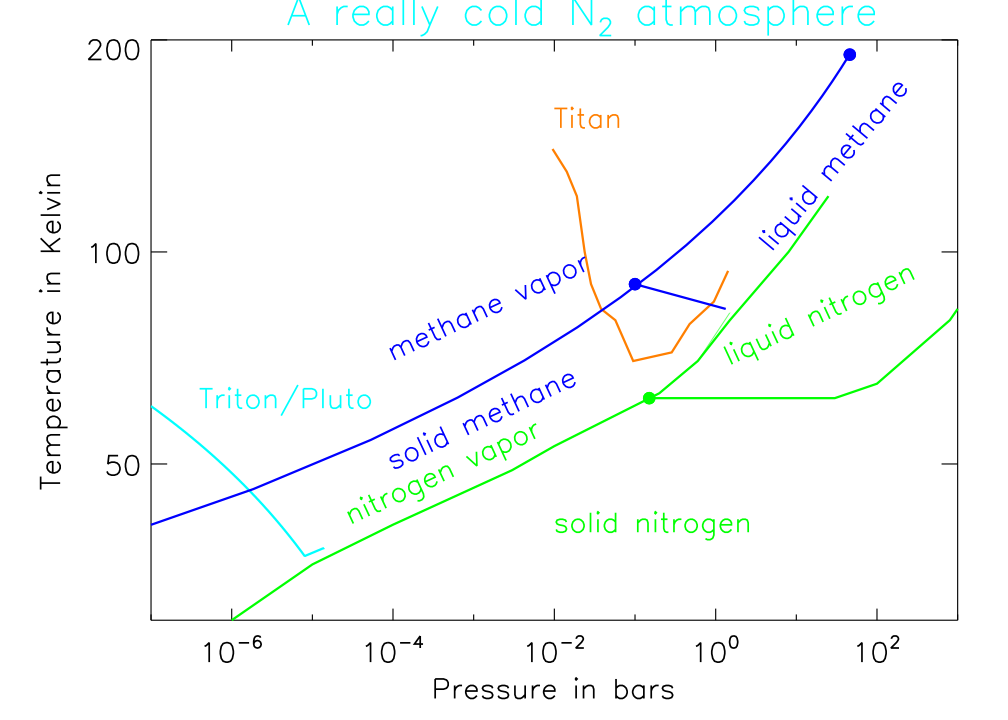
Triton and Pluto
We will look at the fact sheets for Triton, the largest satellite of Neptune, and for Pluto. Following its discovery in 1930, Pluto was originally classified as the ninth planet. However, as we have learned more about Pluto and similar objects, this original classification appears to be a mistake. It makes sense to discuss the satellite Triton and the (non-planet) Pluto together because, as we will see, they are very similar objects. Pluto is the only (former) planet discovered from the USA (from Arizona, actually!). See http://en.wikipedia.org/wiki/Percival_Lowell
Both of these objects are ice-rich
and have cold, tenuous, nitrogen-rich atmospheres. They
are very similar in size and composition, and some scientists
think that Triton may have been captured by Neptune from a cloud
of Pluto-like objects. This is one of the reasons that
Pluto has been demoted from planethood. It is now termed a
dwarf planet.
The strange retrograde orbit of
Triton (click here for a movie of Triton's
orbit; requires QuickTime plugin)
suggests that it may have been captured late in the history of
Neptune.
The atmospheres of both Triton and
Pluto are very cold, cold enough for methane to freeze solid and
for even nitrogen to condense:

Triton has been visited only once,
in 1989 by the Voyager 2 spacecraft. Pluto has never been
visited, but the New
Horizons spacecraft is on the way and will fly by Pluto in
July 2015. Nevertheless, we know a great deal about these
objects from Earthbased observations. Triton has been
observed several times during stellar occultations, and Pluto
has also occulted stars. Pluto's satellite Charon
underwent a series of eclipses with Pluto around 1988, which
gave us detailed information about both bodies.
Recall:
A typical radio
occultation of a spacecraft looks like this:
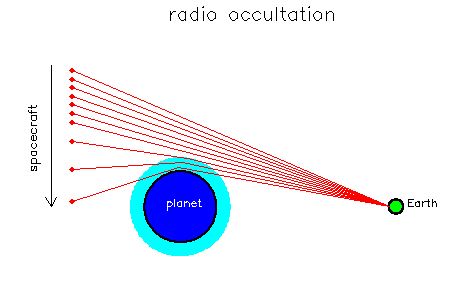
This works just like
seismology. The radio link between the spacecraft and
Earth bends in the planet's atmosphere, because radio signals
travel more slowly in an atmosphere than they do in empty space,
and they bend in accordance with Fermat's principle.
We don't even need a spacecraft to use this technique. We can use light beams from stars to make similar measurements:
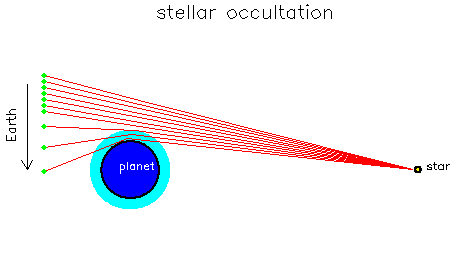
Here is some information about a Triton occultation observed by a UA team in 1997:
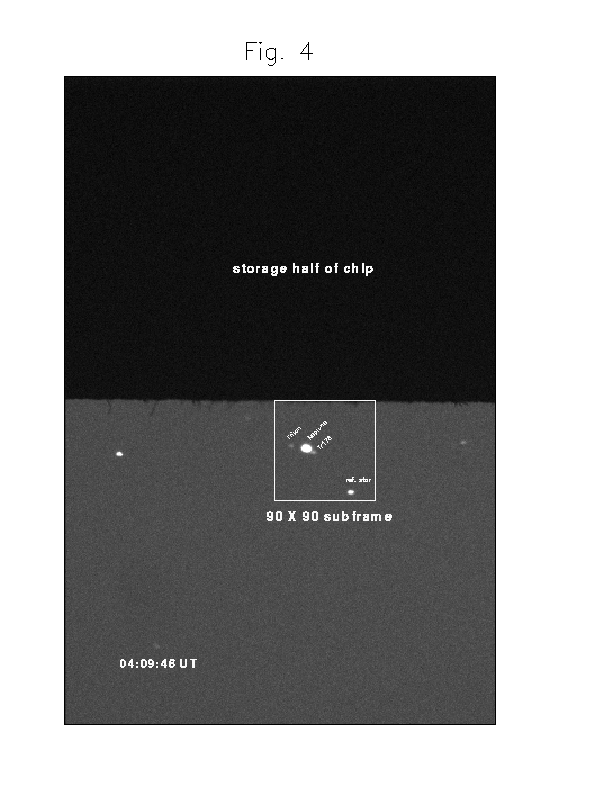
Six hours later, the occultation star
Tr176 had moved to the other side of Neptune and was almost
directly behind Triton. Here is a movie of the dimming of
the star as it went behind Triton:
Here is a diagram showing the
difference between a primary and a secondary atmosphere:
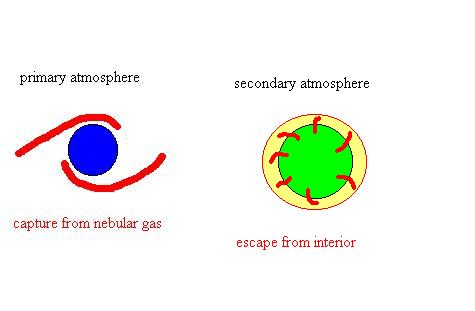
Triton
geyser movie on YouTube
artist's
conception of Triton geysers
Small bodies
Recall the discussion of Lagrangian
points early in the semester. Here are some real examples
of these types of orbits in the Saturn system. The satellites
involved are Dione plus Helene (the
lagrangian satellite with Dione), and Tethys plus
Telesto and Calypso (lagrangian
satellites with Tethys; movie only shows Tethys and
Calypso). By now, satellites have been discovered at both
the L4 and L5 points of Dione and Tethys.
Co-orbiting bodies at either the L4
or L5 point are generically called trojans.
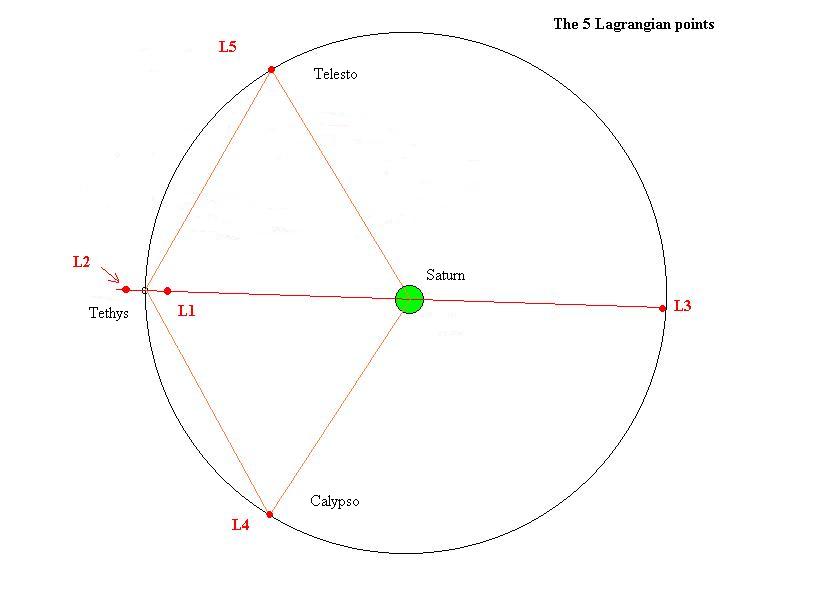
We also have horseshoe orbits, as shown by Janus and Epimetheus, which exchange orbits around Saturn:
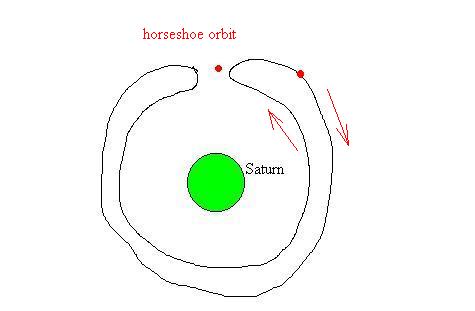
Both Pluto and Triton have
nitrogen-rich atmospheres, similar in composition to Earth's,
but much more tenuous (surface pressure only a few
microbars). Their atmospheres are secondary, like
Earth's. In the case of Triton, we can see the escape of
the secondary atmosphere.
Determination of the mass of Pluto and Charon
Pluto is actually a double planet
like Earth. It has a massive satellite named Charon.
In addition, it has four
more (much smaller) satellites:
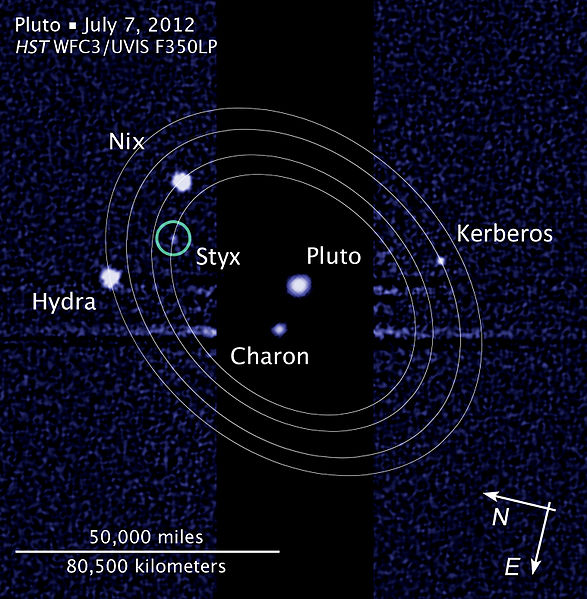
How
does this affect the argument about whether Pluto is a planet?
Although Pluto hasn't yet been visited by a spacecraft, we already know both its mass and Charon's mass by using the general form of Kepler's third law:
P2 = 4(pi)2a3 / G(MPluto+MCharon)
Knowing P and a, we can determine the sum of the masses. The separate masses are determined from the motions with respect to the system barycenter (center of mass):
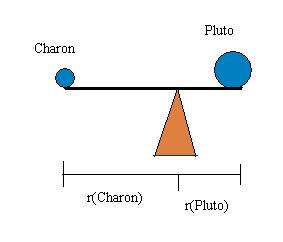
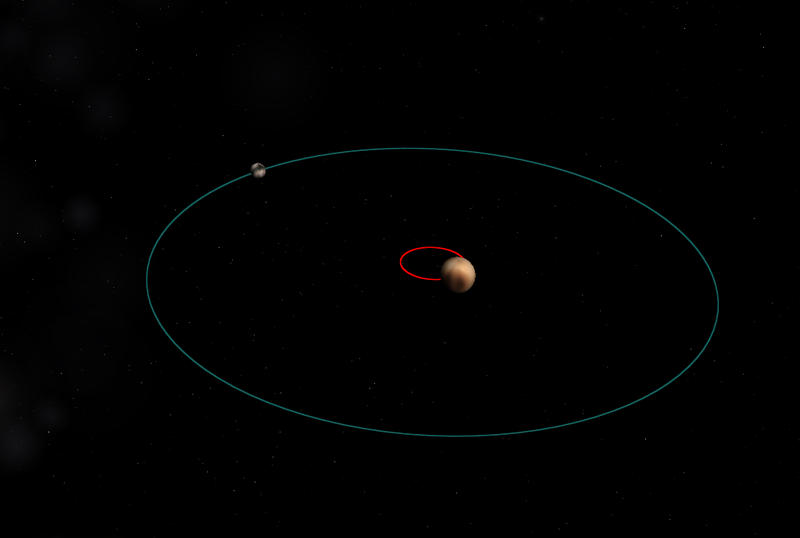
Here is a
link to a movie
showing motion about a barycenter (we'll discuss
this further when we talk about extrasolar planets).